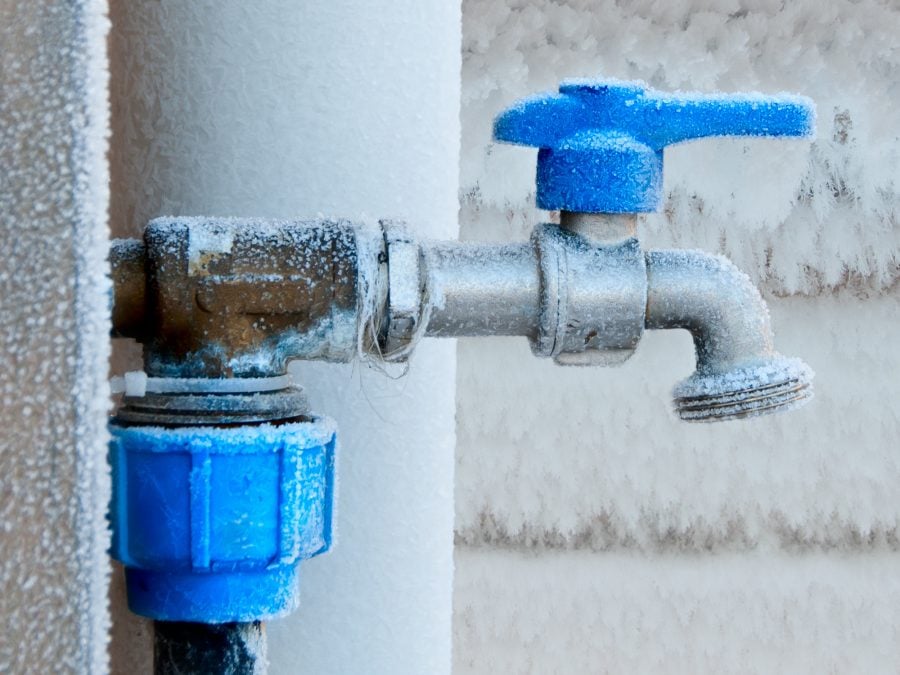Preventing Frozen Plumbing in Cold Weather: Key Advice
Preventing Frozen Plumbing in Cold Weather: Key Advice
Blog Article
Everybody may have their own individual thoughts on the subject of Preventing and dealing with frozen pipes.

Cold weather can wreak havoc on your pipes, especially by freezing pipelines. Here's how to stop it from occurring and what to do if it does.
Introduction
As temperature levels drop, the danger of frozen pipes rises, potentially leading to pricey repair services and water damage. Recognizing exactly how to stop frozen pipelines is important for property owners in cool climates.
Avoidance Tips
Shielding vulnerable pipes
Cover pipelines in insulation sleeves or use heat tape to secure them from freezing temperature levels. Concentrate on pipes in unheated or external areas of the home.
Heating techniques
Keep interior areas properly heated up, particularly areas with plumbing. Open cupboard doors to allow warm air to circulate around pipes under sinks.
How to recognize frozen pipelines
Seek decreased water flow from faucets, unusual odors or noises from pipes, and visible frost on subjected pipes.
Long-Term Solutions
Structural changes
Take into consideration rerouting pipes far from exterior walls or unheated areas. Include added insulation to attic rooms, basements, and crawl spaces.
Updating insulation
Purchase premium insulation for pipes, attic rooms, and walls. Appropriate insulation assists keep constant temperature levels and lowers the danger of frozen pipelines.
Shielding Outdoor Plumbing
Yard tubes and outdoor taps
Disconnect and drain yard hose pipes before winter. Set up frost-proof spigots or cover exterior faucets with protected caps.
Recognizing Frozen Pipes
What causes pipes to freeze?
Pipelines ice up when exposed to temperatures below 32 ° F (0 ° C) for expanded durations. As water inside the pipes freezes, it expands, putting pressure on the pipeline wall surfaces and possibly triggering them to break.
Dangers and damages
Icy pipes can lead to water system disturbances, property damage, and costly fixings. Ruptured pipelines can flooding homes and trigger substantial structural damage.
Signs of Frozen Pipes
Identifying icy pipelines early can avoid them from bursting.
What to Do If Your Pipes Freeze
Immediate actions to take
If you believe icy pipes, keep taps available to eliminate pressure as the ice melts. Make use of a hairdryer or towels soaked in warm water to thaw pipelines slowly.
Verdict
Avoiding frozen pipes requires aggressive actions and fast reactions. By understanding the reasons, indications, and preventive measures, property owners can secure their plumbing during winter.
5 Ways to Prevent Frozen Pipes
Drain Outdoor Faucets and Disconnect Hoses
First, close the shut-off valve that controls the flow of water in the pipe to your outdoor faucet. Then, head outside to disconnect and drain your hose and open the outdoor faucet to allow the water to completely drain out of the line. Turn off the faucet when done. Finally, head back to the shut-off valve and drain the remaining water inside the pipe into a bucket or container. Additionally, if you have a home irrigation system, you should consider hiring an expert to clear the system of water each year.
Insulate Pipes
One of the best and most cost-effective methods for preventing frozen water pipes is to wrap your pipes with insulation. This is especially important for areas in your home that aren’t exposed to heat, such as an attic. We suggest using foam sleeves, which can typically be found at your local hardware store.
Keep Heat Running at 65
Your pipes are located inside your walls, and the temperature there is much colder than the rest of the house. To prevent your pipes from freezing, The Insurance Information Institute suggests that you keep your home heated to at least 65 degrees, even when traveling. You may want to invest in smart devices that can keep an eye on the temperature in your home while you’re away.
Leave Water Dripping
Moving water — even a small trickle — can prevent ice from forming inside your pipes. When freezing temps are imminent, start a drip of water from all faucets that serve exposed pipes. Leaving a few faucets running will also help relieve pressure inside the pipes and help prevent a rupture if the water inside freezes.
Open Cupboard Doors
Warm your kitchen and bathroom pipes by opening cupboards and vanities. You should also leave your interior doors ajar to help warm air circulate evenly throughout your home.

Do you like reading up on How to prepare your home plumbing for winter weather? Post a remark further down. We will be glad to hear your thinking about this write-up. We are looking forward that you come back again in the near future. For those who enjoyed our page if you please remember to pass it around. Thanks for taking the time to read it.
Book Service Report this page